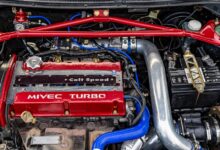Honda Car Maintenance Schedule: The Ultimate Guide for Optimal Performance
Sponsored Ads
Introduction
Maintaining your Honda car is essential for ensuring its longevity, reliability, and safety. Adhering to a regular maintenance schedule can help prevent costly repairs, reduce downtime, and optimize the overall performance of your vehicle. This comprehensive guide will provide you with detailed information on the Honda car maintenance schedule, including recommended services, intervals, and potential costs. By following these guidelines, you can keep your Honda running smoothly for years to come.
Understanding Your Honda Car Maintenance Schedule
Honda’s maintenance schedule is designed to provide a comprehensive plan for servicing your vehicle based on its age, mileage, and operating conditions. The schedule outlines the specific services and inspections that should be performed at regular intervals to maintain optimal performance and prevent potential issues.
The maintenance schedule is typically divided into three categories: regular maintenance, major maintenance, and seasonal maintenance. Regular maintenance includes services such as oil changes, tire rotations, and brake inspections. Major maintenance encompasses more extensive services, such as spark plug replacements, timing belt replacements, and transmission fluid changes. Seasonal maintenance includes services that are specific to certain seasons, such as winterization and summer preparation.
Benefits of Adhering to the Honda Car Maintenance Schedule
Following the Honda car maintenance schedule offers numerous benefits, including:
- Extended vehicle life: Regular maintenance can help extend the lifespan of your Honda by preventing premature wear and tear on critical components.
- Enhanced performance: By ensuring that your vehicle’s systems are properly maintained, you can optimize its performance and efficiency.
- Improved fuel economy: Regular maintenance can help improve your Honda’s fuel economy by ensuring that its engine is operating at its peak efficiency.
- Reduced repair costs: By addressing potential issues before they become major problems, you can save money on costly repairs.
- Increased safety: A well-maintained Honda is more likely to operate safely and reliably, reducing the risk of accidents.
Drawbacks of Neglecting the Honda Car Maintenance Schedule
Neglecting the Honda car maintenance schedule can have detrimental consequences, including:
- Shortened vehicle life: Without regular maintenance, your Honda’s components may experience premature wear and tear, leading to a shortened lifespan.
- Reduced performance: Neglecting maintenance can affect your Honda’s performance, making it less efficient and responsive.
- Increased fuel consumption: A poorly maintained Honda may experience reduced fuel economy due to inefficient engine operation.
- Increased repair costs: Neglecting maintenance can lead to major repairs that could have been prevented with timely servicing.
- Diminished safety: A neglected Honda may have compromised safety features, increasing the risk of accidents.
Honda Car Maintenance Schedule: A Comprehensive Table
The following table provides a comprehensive overview of the Honda car maintenance schedule, including recommended services, intervals, and potential costs:
| Service | Interval | Cost |
|---|---|---|
| Oil change | Every 5,000 miles | $30-$50 |
| Tire rotation | Every 5,000 miles | $20-$30 |
| Brake inspection | Every 10,000 miles | $50-$70 |
| Spark plug replacement | Every 30,000 miles | $100-$200 |
| Timing belt replacement | Every 60,000 miles | $500-$1,000 |
FAQs about Honda Car Maintenance Schedule
1. What is the recommended oil change interval for Honda cars?
Honda recommends changing the oil in your car every 5,000 miles or 6 months, whichever comes first.
2. How often should I rotate my tires?
Honda recommends rotating your tires every 5,000 miles to ensure even wear and extend their lifespan.
3. What is included in a brake inspection?
A brake inspection typically includes checking the brake pads, rotors, calipers, and fluid level to ensure the proper operation of your braking system.
4. When should I replace my spark plugs?
Honda recommends replacing your spark plugs every 30,000 miles to ensure optimal engine performance and fuel efficiency.
5. How often should I replace my timing belt?
Honda recommends replacing your timing belt every 60,000 miles to prevent potential engine damage if the belt fails.
6. Can I perform maintenance on my Honda myself?
While some basic maintenance tasks, such as oil changes, can be performed at home, it is generally recommended to have your Honda serviced by a qualified mechanic to ensure proper maintenance and avoid potential issues.
7. What are the signs that my Honda needs maintenance?
Signs that your Honda may need maintenance include: unusual noises, reduced performance, increased fuel consumption, dashboard warning lights, and leaks.
8. Can I extend the maintenance intervals for my Honda?
While it is generally not recommended to extend the maintenance intervals for your Honda, you may be able to adjust them based on your driving habits and the specific model of your vehicle. Consult your Honda dealer or a qualified mechanic for personalized advice.
9. What are the potential consequences of neglecting Honda car maintenance?
Neglecting Honda car maintenance can lead to reduced vehicle life, diminished performance, increased fuel consumption, costly repairs, and compromised safety.
10. How can I find a qualified Honda mechanic?
You can find a qualified Honda mechanic by asking for recommendations from friends or family, checking online reviews, or contacting your local Honda dealership.
11. What are the benefits of using genuine Honda parts for maintenance?
Using genuine Honda parts for maintenance ensures that your vehicle is repaired or replaced with parts that meet Honda’s specifications and quality standards, providing optimal performance and durability.
12. Does regular maintenance affect my Honda’s resale value?
Regular maintenance can help maintain or even increase your Honda’s resale value by demonstrating its well-maintained condition and reducing the likelihood of major repairs.
13. How can I stay up-to-date with the latest Honda car maintenance recommendations?
You can stay up-to-date with the latest Honda car maintenance recommendations by contacting your local Honda dealership, visiting the Honda website, or subscribing to Honda service bulletins.
Conclusion: Taking Action for Optimal Honda Performance
By adhering to the Honda car maintenance schedule, you can ensure that your vehicle operates at its peak performance and provides you with years of reliable service. Regular maintenance is an essential investment in your Honda’s longevity, safety, and overall value. Schedule regular appointments with a qualified Honda mechanic and follow the recommended maintenance guidelines to keep your vehicle running smoothly for miles to come.
Remember, a well-maintained Honda is a happy Honda. By committing to regular maintenance, you can enjoy the peace of mind that comes with knowing that your vehicle is in optimal condition and ready for any adventure.
Drive Safely and Enjoy the Journey!
## Regular Maintenance
Regular maintenance is the foundation of a healthy Honda. By performing these services at the recommended intervals, you can prevent minor issues from developing into major problems.
Regular maintenance typically includes:
- Oil changes
- Tire rotations
- Brake inspections
- Fluid level checks
- Battery inspections
- Air filter replacements
- Spark plug replacements
## Major Maintenance
Major maintenance services are typically performed less frequently than regular maintenance, but they are essential for ensuring the long-term health of your Honda.
Major maintenance services typically include:
- Timing belt replacements
- Water pump replacements
- Transmission fluid changes
- Differential fluid changes
- Brake pad replacements
- Rotor replacements
- Suspension inspections










